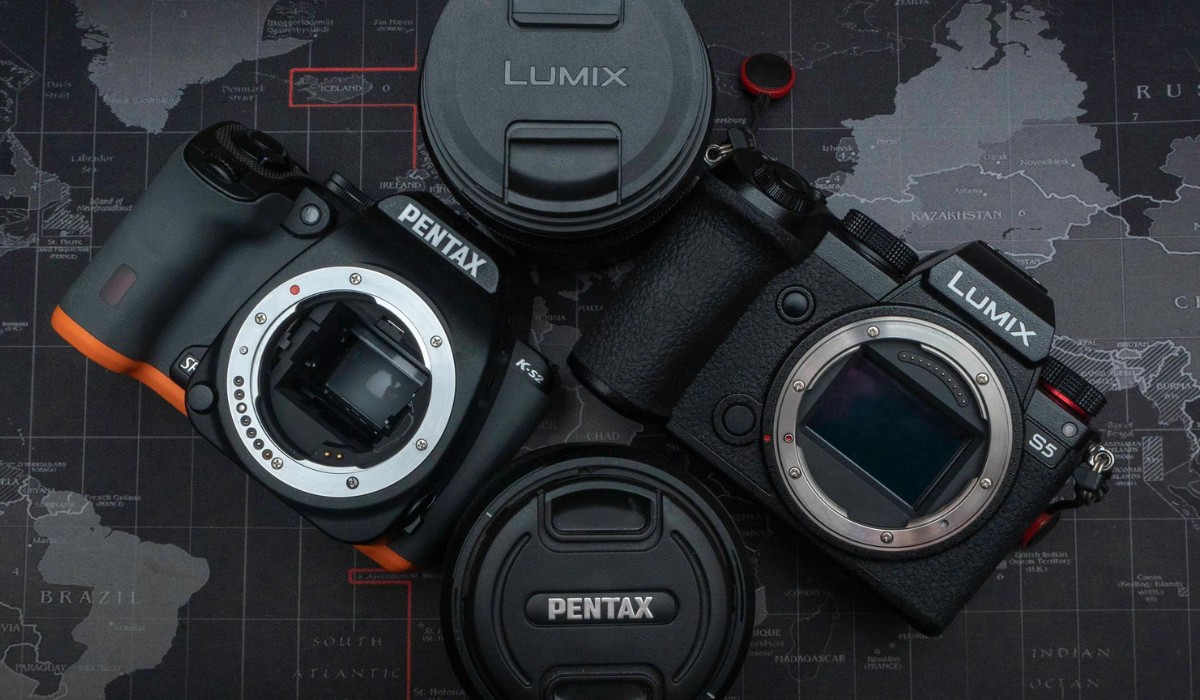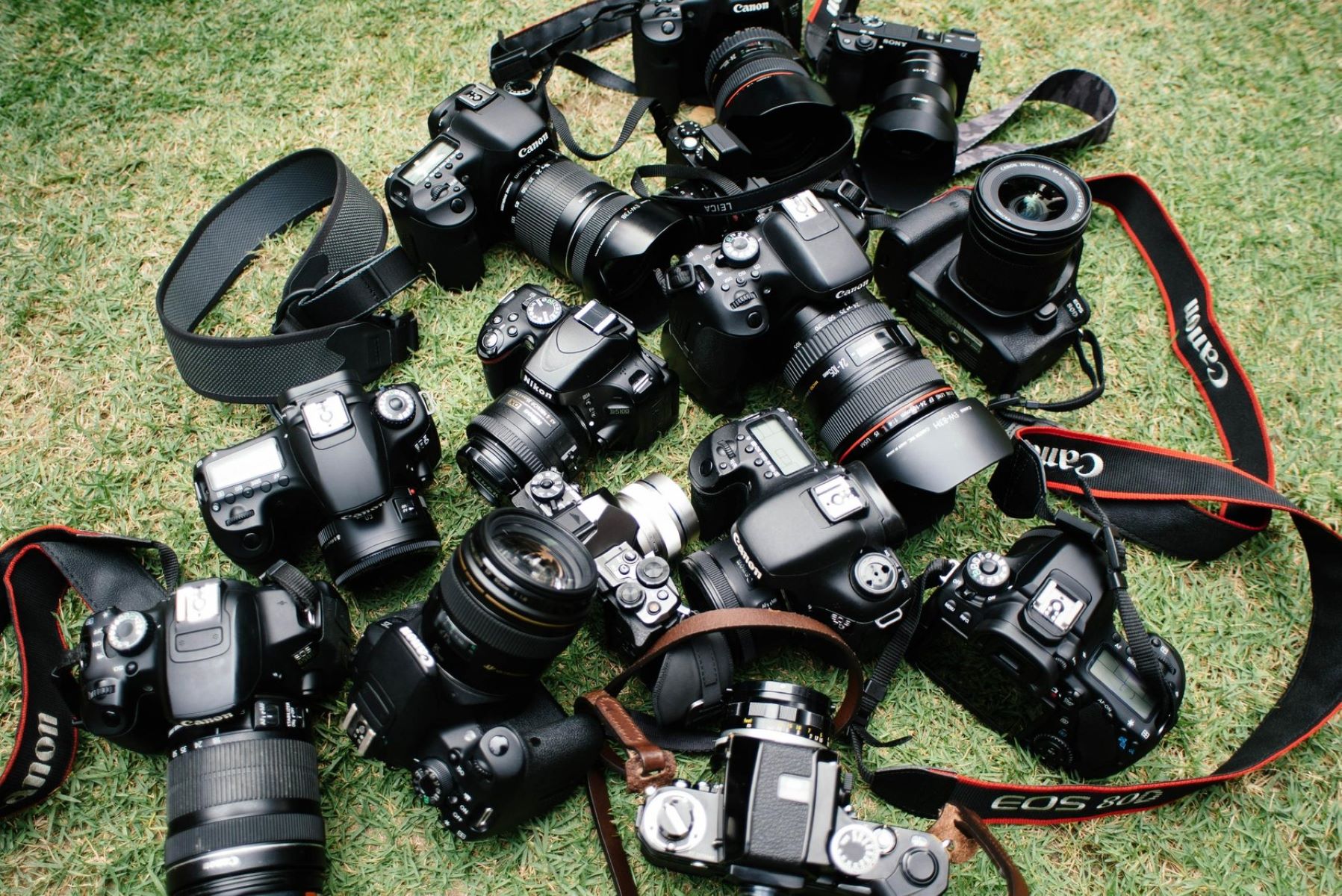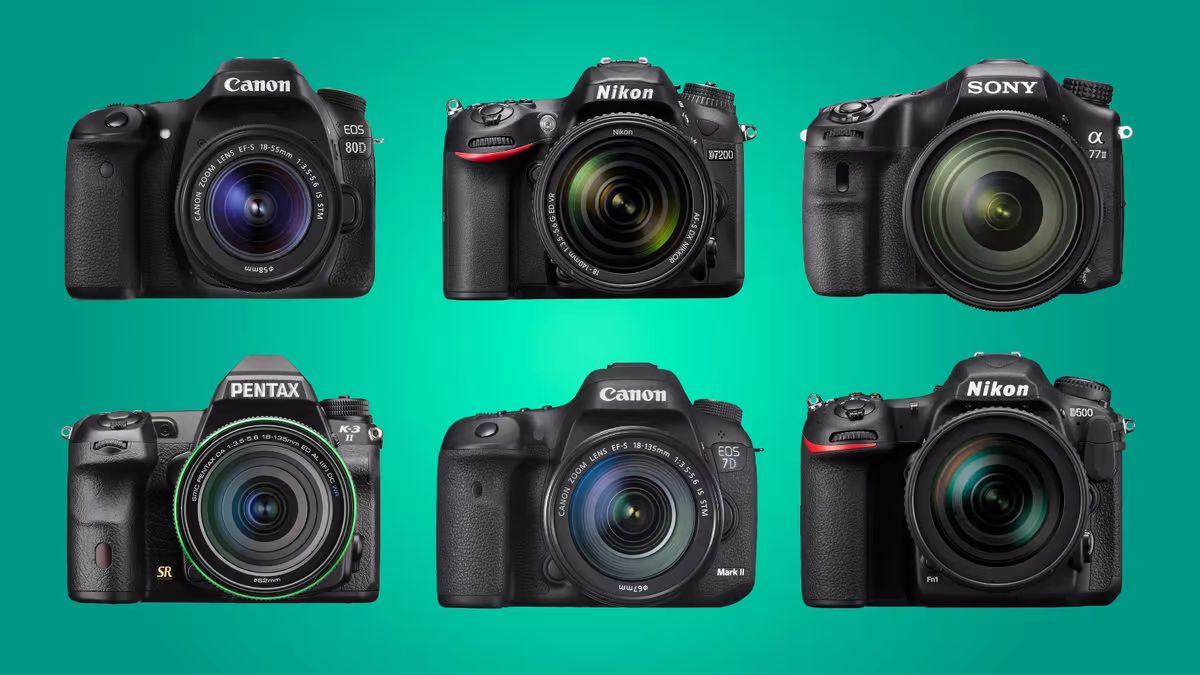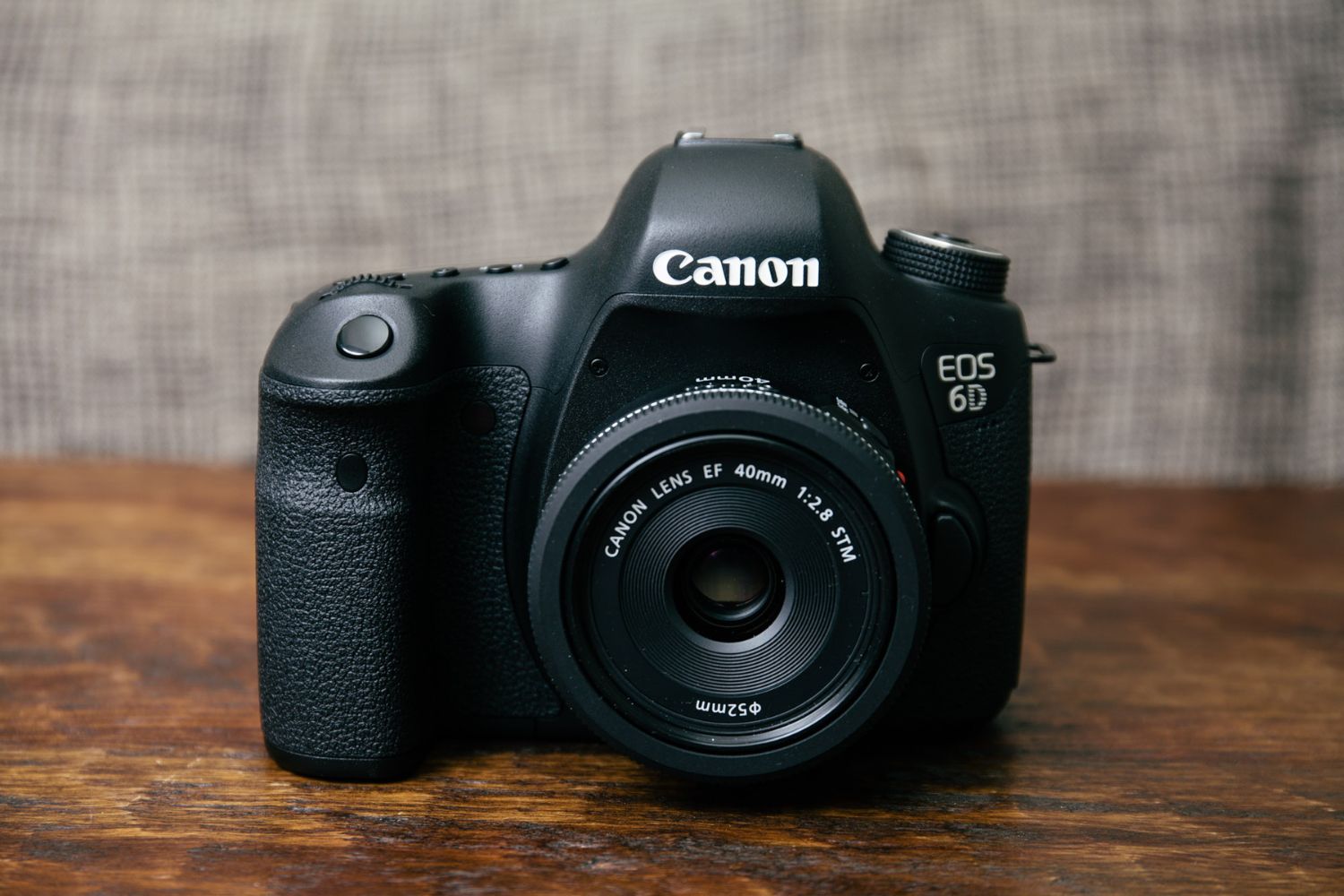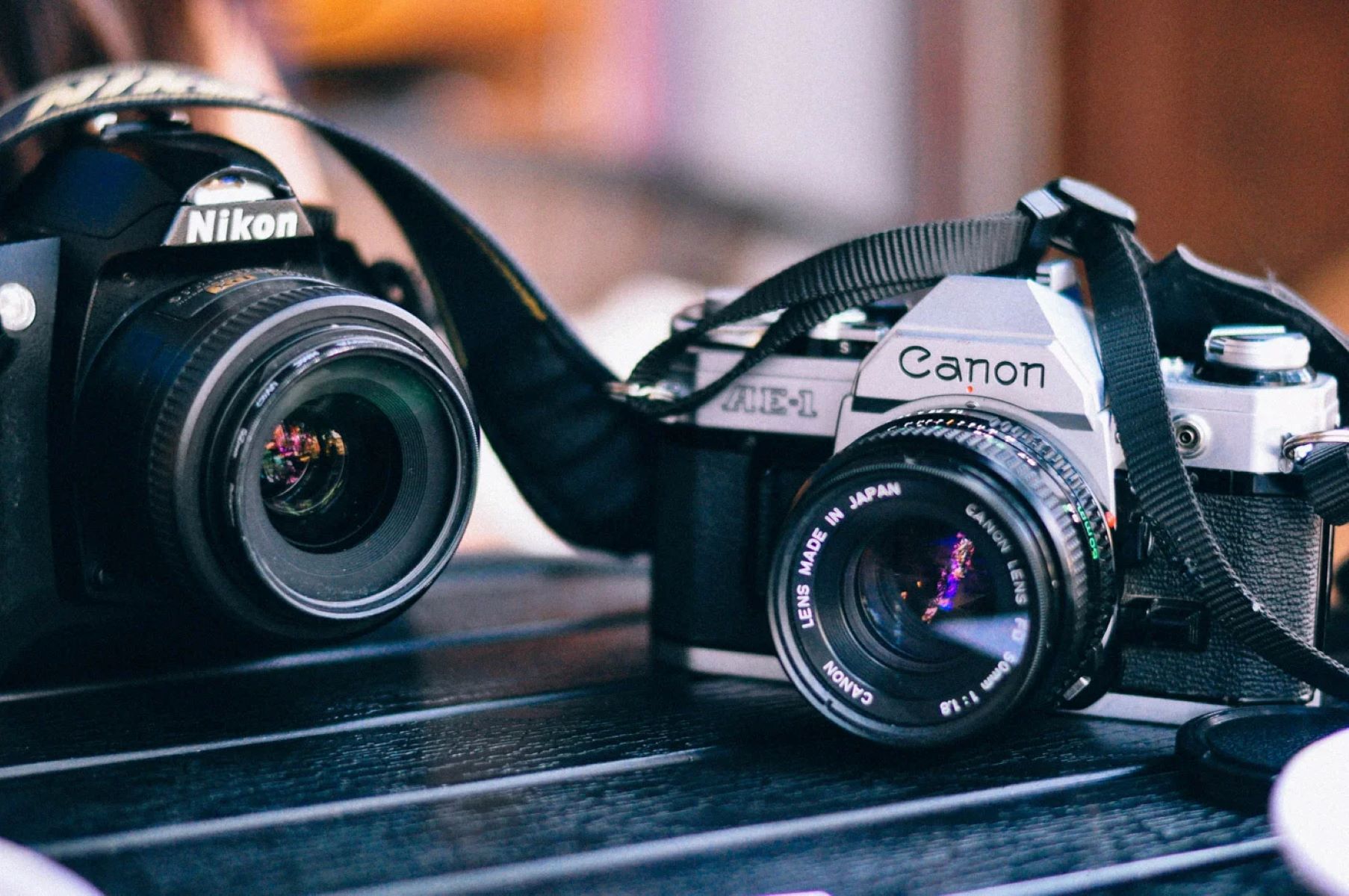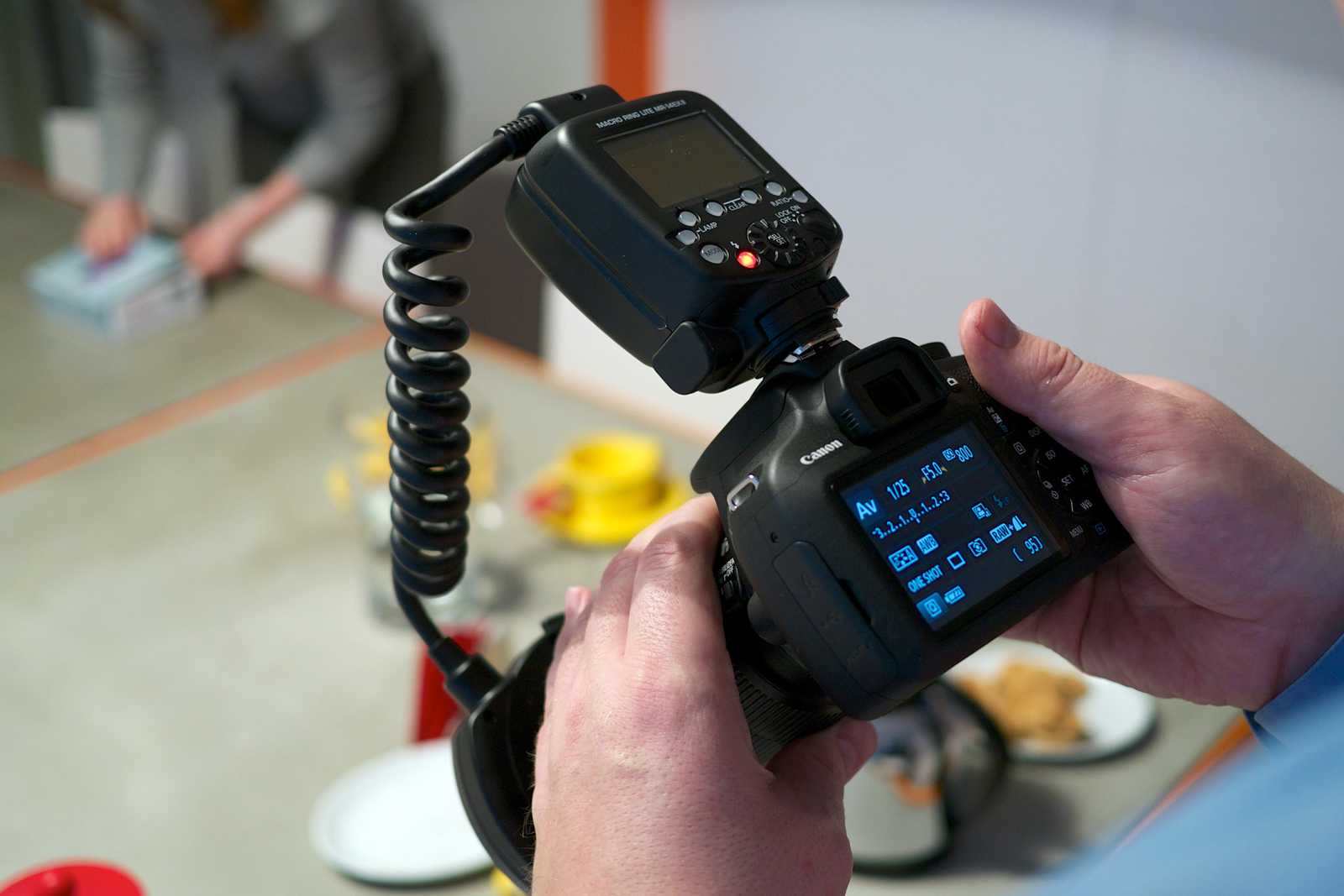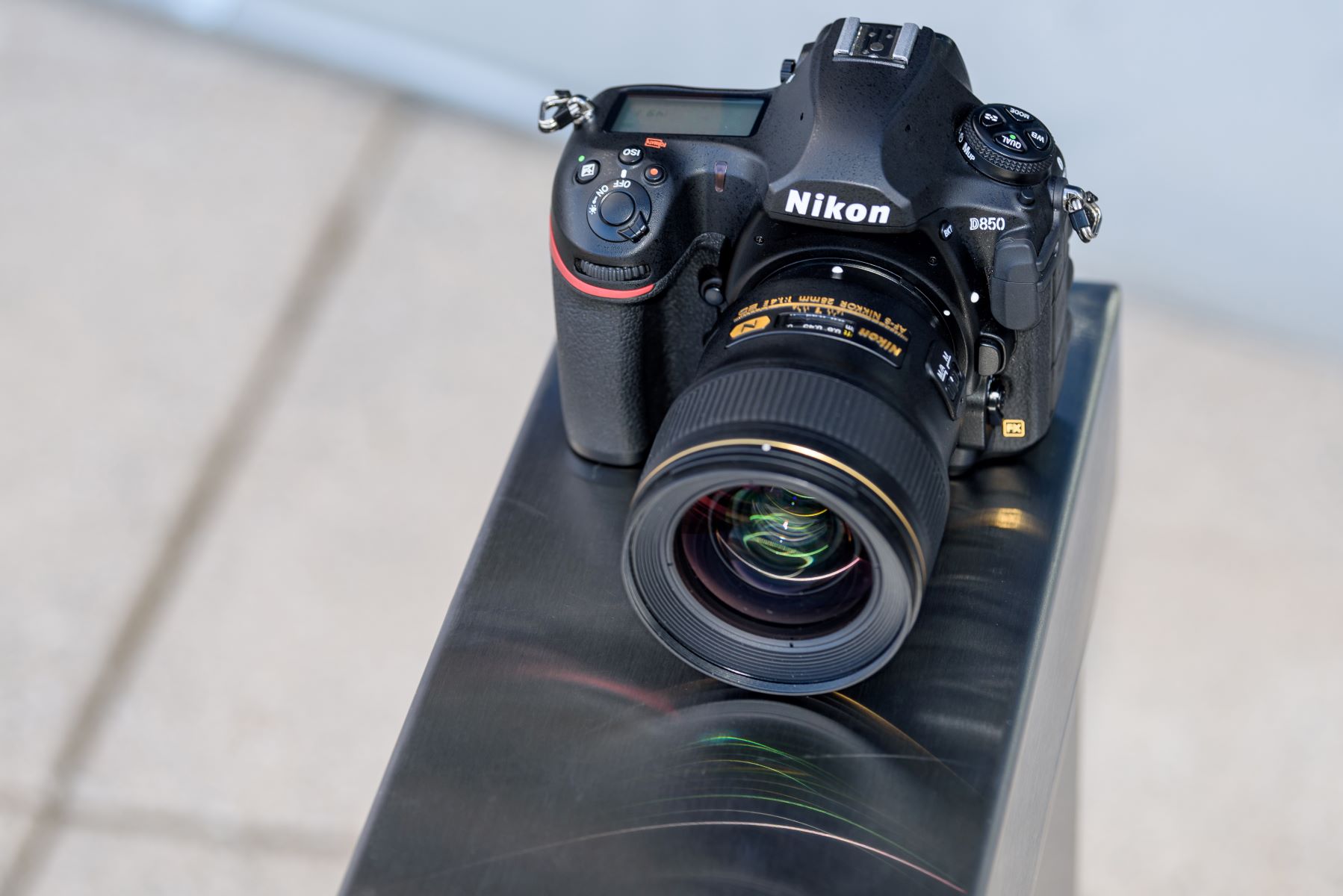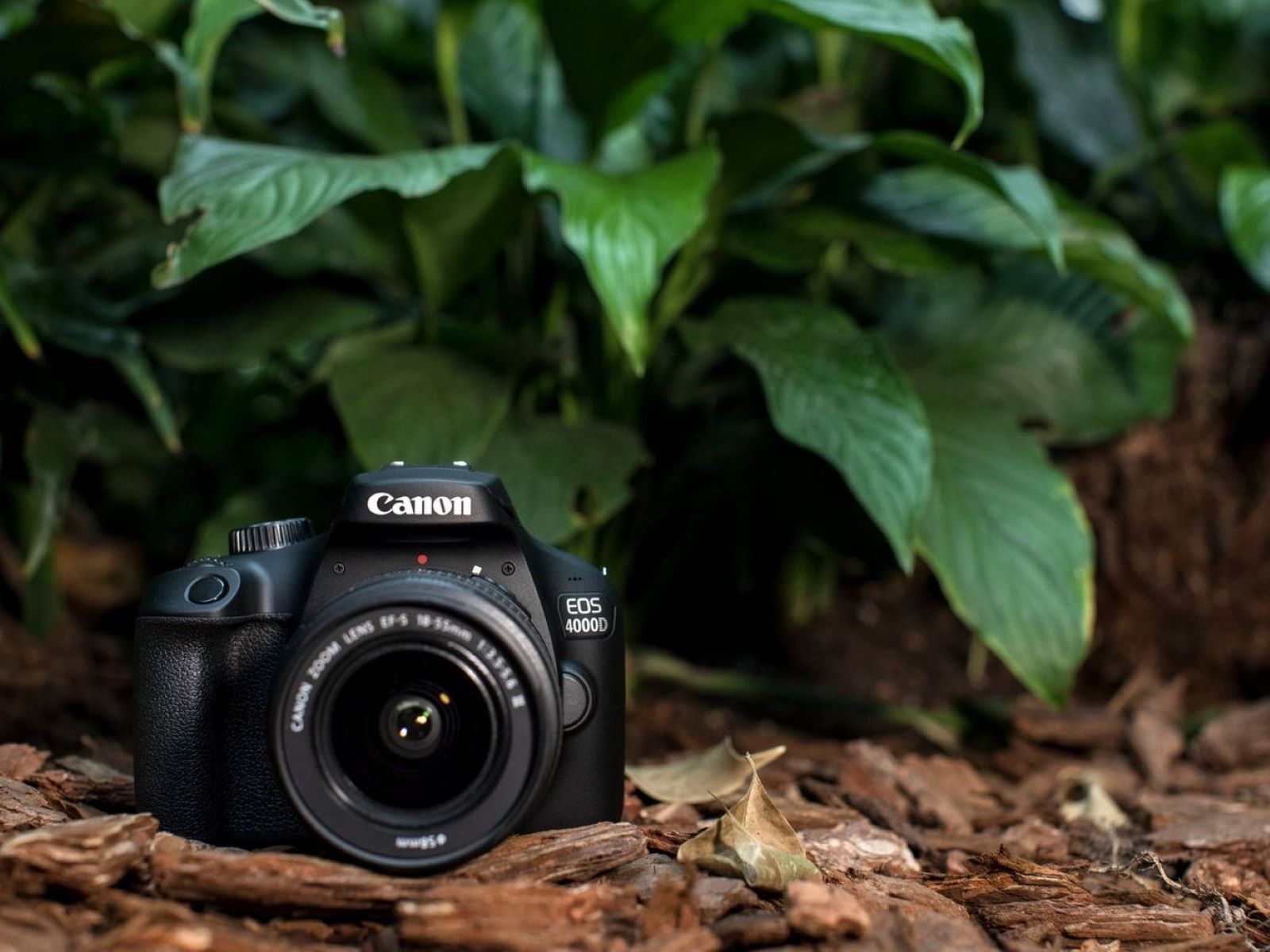Sensor Size
Sensor Size: The Foundation of Image Quality
When considering an upgrade to a DSLR camera, one of the most crucial factors to evaluate is the sensor size. The sensor plays a fundamental role in capturing light and translating it into digital images. Larger sensors typically yield higher image quality, especially in low-light conditions, as they can gather more light and produce less noise. There are several common sensor sizes found in DSLR cameras, including full-frame, APS-C, and micro four-thirds.
Full-Frame Sensors: These sensors are equivalent in size to a frame of 35mm film, offering the widest field of view and excellent performance in low-light situations. They are the top choice for professional photographers and enthusiasts seeking unparalleled image quality and dynamic range.
APS-C Sensors: Smaller than full-frame sensors, APS-C sensors are commonly found in entry-level and mid-range DSLR cameras. While they may not match the performance of full-frame sensors in low light, they still provide impressive image quality and are more budget-friendly.
Micro Four-Thirds Sensors: These sensors are even smaller and are typically found in mirrorless cameras. While they may not excel in low-light conditions compared to full-frame and APS-C sensors, they offer the advantage of compact camera bodies and lenses, making them ideal for travel and street photography.
When upgrading a DSLR camera, it’s essential to consider the intended use and shooting conditions. If low-light performance and uncompromising image quality are top priorities, a full-frame sensor may be the ideal choice. However, for those seeking a balance between performance and portability, APS-C or micro four-thirds sensors may offer a more practical solution.
Megapixels
Megapixels: Balancing Resolution and File Size
When contemplating an upgrade to a DSLR camera, the megapixel count is a pivotal consideration. Megapixels directly impact the resolution and level of detail in images, making it a crucial factor for photographers who frequently print large-format images or require extensive cropping capabilities.
Understanding Megapixels: A megapixel is equivalent to one million pixels, and the megapixel count of a camera sensor determines the potential resolution of the images it can capture. Higher megapixel counts enable the capture of finer details and facilitate larger prints without compromising image quality.
Resolution Requirements: For most photography needs, a camera with a moderate megapixel count, such as 20-24 megapixels, is sufficient to produce high-quality prints and digital images. However, for specialized applications like commercial photography or large-scale printing, a higher megapixel count, such as 36-50 megapixels, may be advantageous.
File Size Considerations: It’s important to recognize that higher megapixel counts result in larger file sizes, which can impact storage requirements and workflow efficiency. Additionally, larger file sizes may necessitate more powerful computing hardware for editing and processing tasks.
Practical Application: When upgrading a DSLR camera, the decision regarding megapixels should align with the intended use of the camera. For photographers who primarily share images digitally or produce standard-sized prints, a moderate megapixel count strikes a balance between resolution and file size. Conversely, professionals specializing in commercial, landscape, or architectural photography may benefit from a higher megapixel count to capture intricate details and facilitate large-format printing.
ISO Range
ISO Range: Mastering Light Sensitivity
When contemplating an upgrade to a DSLR camera, the ISO range is a critical aspect that significantly impacts a photographer’s ability to capture stunning images in various lighting conditions. The ISO setting determines the camera sensor’s sensitivity to light, enabling photographers to adapt to low-light environments or fast-moving subjects without compromising image quality.
Understanding ISO: The ISO rating, derived from the International Organization for Standardization, represents the sensor’s sensitivity to light. Lower ISO settings, such as ISO 100 or 200, are ideal for well-lit environments, producing images with minimal noise and optimal image quality. In contrast, higher ISO settings, such as ISO 1600 or 3200, enhance the sensor’s sensitivity, making it possible to capture images in low-light conditions or freeze fast-paced action.
Low-Light Performance: When upgrading a DSLR camera, a broader ISO range provides photographers with the flexibility to shoot in challenging lighting situations, such as dimly lit interiors or outdoor scenes during dusk or dawn. Cameras with excellent low-light performance, characterized by higher native ISO settings and effective noise reduction capabilities, ensure the preservation of image details and colors even in demanding scenarios.
Action Photography: For photographers specializing in sports, wildlife, or event photography, a wide ISO range is invaluable for capturing fast-moving subjects with precision and clarity. The ability to utilize higher ISO settings without sacrificing image quality empowers photographers to freeze action in dynamic environments, delivering compelling and impactful images.
Adaptability and Creativity: An expanded ISO range equips photographers with the versatility to experiment with different lighting conditions and push the boundaries of their creativity. From long-exposure night photography to high-speed action shots, a comprehensive ISO range enables photographers to explore diverse genres and expand their artistic horizons.
Autofocus System
Autofocus System: Precision and Speed in Focus Control
When considering an upgrade to a DSLR camera, the autofocus system is a pivotal feature that profoundly influences the speed, accuracy, and versatility of focusing capabilities. A sophisticated autofocus system empowers photographers to consistently capture sharp and well-defined images across diverse shooting scenarios, from fast-paced action to contemplative landscapes.
Focusing Speed and Accuracy: A cutting-edge autofocus system is characterized by its ability to swiftly and accurately lock onto subjects, ensuring that critical moments are captured with precision. Whether photographing sports, wildlife, or fleeting candid moments, a responsive autofocus system is indispensable for securing sharp images without delay.
Focus Points and Coverage: An extensive array of focus points, strategically distributed across the frame, enhances the camera’s ability to track and focus on subjects throughout the composition. Additionally, a broader coverage area enables photographers to compose their shots with greater flexibility, knowing that the autofocus system can adeptly capture subjects positioned away from the center of the frame.
Low-Light Performance: The capability of the autofocus system to operate effectively in dimly lit environments is crucial for photographers who frequently encounter challenging lighting conditions. Advanced autofocus systems with enhanced low-light sensitivity ensure consistent focusing even in situations where natural light is limited, enabling photographers to pursue their creative vision without constraints.
Continuous and Predictive Focus: For photographers engaged in capturing dynamic subjects in motion, such as athletes, wildlife, or performing artists, a sophisticated autofocus system with predictive tracking capabilities is invaluable. The ability to maintain focus on moving subjects and predict their trajectory empowers photographers to seize decisive moments with unwavering clarity.
When upgrading a DSLR camera, the autofocus system plays a pivotal role in elevating the overall shooting experience and expanding creative possibilities. By prioritizing a robust autofocus system, photographers can confidently pursue a diverse range of subjects and genres, secure in the knowledge that their camera’s focusing capabilities are poised to deliver exceptional results.
Image Stabilization
Image Stabilization: Preserving Clarity and Sharpness
When contemplating an upgrade to a DSLR camera, the presence of an effective image stabilization system is a pivotal consideration that directly impacts the quality and sharpness of captured images. Image stabilization technology mitigates the effects of camera shake, ensuring that photographers can achieve crisp and clear results, particularly in challenging shooting conditions or when utilizing telephoto lenses.
Types of Image Stabilization: DSLR cameras employ various methods of image stabilization, including optical stabilization within the lens and sensor-shift stabilization within the camera body. Optical stabilization mechanisms compensate for camera shake by adjusting the lens elements, while sensor-shift stabilization functions by moving the camera’s sensor to counteract unintended motion.
Low-Light Performance: In dimly lit environments or when capturing subjects in low-light conditions, image stabilization technology is instrumental in enabling photographers to achieve sharp images without the need for excessively high ISO settings or slow shutter speeds. By minimizing the impact of hand movement, image stabilization enhances the camera’s ability to capture details and textures with exceptional clarity.
Telephoto and Macro Photography: When utilizing telephoto lenses or engaging in close-up macro photography, the susceptibility to minute movements is heightened, potentially compromising image sharpness. An effective image stabilization system mitigates these challenges, allowing photographers to confidently explore distant subjects or capture intricate details without the constraints imposed by camera shake.
Versatility and Creativity: Image stabilization technology empowers photographers to push the boundaries of their creativity by facilitating handheld shooting in situations that would traditionally demand a tripod or other external support. This newfound flexibility enables spontaneous and dynamic compositions, fostering a more immersive and uninhibited photographic experience.
When upgrading a DSLR camera, the presence of a reliable image stabilization system is an invaluable asset that enhances the overall shooting experience and ensures the consistent delivery of sharp and visually compelling images across a diverse range of photographic scenarios.
Video Capabilities
Video Capabilities: Unleashing Creative Potential
When considering an upgrade to a DSLR camera, the video capabilities are an essential aspect that extends the creative potential of photographers and videographers alike. Modern DSLR cameras offer a myriad of video features, empowering content creators to capture cinematic footage with exceptional clarity, dynamic range, and artistic expression.
4K Video Resolution: The advent of 4K video resolution in DSLR cameras has revolutionized the videography landscape, enabling filmmakers and content creators to capture footage with unparalleled detail and visual fidelity. The higher resolution not only enhances the viewing experience but also provides greater flexibility for post-production tasks such as cropping and digital stabilization.
Frame Rate Options: A versatile DSLR camera encompasses a broad range of frame rate options, including standard frame rates such as 24fps and 30fps, as well as higher frame rates for achieving smooth slow-motion effects. The ability to manipulate frame rates empowers videographers to imbue their footage with dramatic visual impact and creative storytelling techniques.
Manual Control and Customization: Advanced DSLR cameras offer extensive manual control over video settings, allowing users to tailor exposure, focus, and audio parameters to suit their specific creative vision. This level of customization fosters a more immersive and personalized filmmaking experience, enabling videographers to exert precise control over every aspect of their productions.
Log and HDR Recording: Many modern DSLR cameras feature log and high dynamic range (HDR) recording capabilities, facilitating the capture of footage with expanded tonal range and enhanced color depth. These features are particularly valuable for professional videographers and filmmakers seeking to achieve a cinematic look and seamless integration with existing post-production workflows.
Audio Recording and Monitoring: A comprehensive DSLR camera encompasses robust audio recording and monitoring functionalities, empowering content creators to capture high-quality sound and monitor audio levels in real time. The integration of external microphones and audio interfaces further enhances the camera’s capacity to deliver professional-grade audio alongside stunning visual content.
When upgrading a DSLR camera, the consideration of video capabilities opens up a realm of creative possibilities, enabling photographers and videographers to seamlessly transition between still photography and videography while consistently delivering captivating and visually immersive content.
Connectivity Options
Connectivity Options: Seamlessly Integrating the Digital Workflow
In the context of upgrading a DSLR camera, the available connectivity options are a pivotal consideration that directly impacts a photographer's ability to streamline their digital workflow, transfer files efficiently, and remotely control the camera for enhanced creative flexibility.
Wireless Connectivity: The integration of Wi-Fi and Bluetooth connectivity enables photographers to seamlessly transfer images to smart devices for immediate sharing on social media platforms, as well as for remote camera control. This wireless functionality facilitates a more dynamic and efficient workflow, particularly in scenarios where rapid image dissemination is paramount.
NFC and GPS Capabilities: Near Field Communication (NFC) technology empowers photographers to establish a quick and secure connection between the camera and compatible devices, simplifying the process of image transfer and device pairing. Additionally, GPS capabilities enable the automatic geotagging of images, providing valuable location data for organizing and cataloging photographic collections.
USB and HDMI Interfaces: The presence of USB and HDMI interfaces on DSLR cameras facilitates direct connectivity to external devices such as computers, monitors, and printers. This direct link streamlines the transfer of high-resolution images and video footage, as well as the real-time monitoring of content on larger displays for critical assessment and collaboration.
Remote Shooting and Tethering: Advanced DSLR cameras offer the capability for remote shooting and tethered capture, allowing photographers to control the camera settings and trigger the shutter from a connected computer or mobile device. This functionality is particularly advantageous for studio and commercial photography, enabling precise control and immediate feedback during the image capture process.
Cloud Integration: Some DSLR cameras feature cloud integration, enabling seamless synchronization of captured images with cloud storage services. This functionality ensures that photographers can safeguard their work and access it from any location, fostering greater flexibility and peace of mind in managing their digital assets.
In the realm of upgrading a DSLR camera, the consideration of connectivity options is integral to optimizing the digital workflow, enhancing collaboration, and embracing the convenience of seamless file transfer and remote control capabilities. By prioritizing a camera with diverse and robust connectivity features, photographers can elevate their efficiency and creative versatility while seamlessly integrating their photographic practice with the digital landscape.
Battery Life
Battery Life: Sustaining Uninterrupted Shooting
When contemplating an upgrade to a DSLR camera, the battery life is a critical consideration that profoundly influences the photographer’s ability to capture images without interruption. A robust and long-lasting battery empowers photographers to engage in extended photo sessions and ensures that they can seize decisive moments without being constrained by frequent battery changes or recharging.
Shooting Duration: The battery life of a DSLR camera directly impacts the duration of continuous shooting sessions, particularly in scenarios such as events, wildlife photography, and travel expeditions where access to power sources may be limited. A prolonged battery life minimizes the need for frequent battery swaps, allowing photographers to remain focused on their subjects and creative vision.
Power Management: Advanced DSLR cameras often feature power-saving modes and efficient energy management systems that optimize battery usage without compromising performance. These features extend the operational lifespan of the battery, ensuring that photographers can maximize their shooting time without unnecessary power drain.
Environmental Considerations: When venturing into outdoor or remote locations, the longevity of the camera’s battery becomes even more crucial. A durable battery capable of enduring varying temperatures and environmental conditions provides photographers with the confidence to explore and capture images in diverse landscapes and climates.
Backup Power Solutions: Some DSLR cameras offer compatibility with external battery grips or power banks, providing photographers with the option to extend the camera’s battery life through supplementary power sources. This flexibility is particularly valuable in demanding shooting scenarios or situations where continuous power is essential.
Real-Time Battery Monitoring: The integration of accurate battery level indicators and real-time monitoring functionality enables photographers to proactively manage their power resources and plan their shooting sessions effectively. This insight empowers photographers to anticipate when a battery change or recharge may be necessary, minimizing disruptions during critical moments.
When upgrading a DSLR camera, the consideration of battery life is paramount in ensuring uninterrupted shooting and a seamless photographic experience. By prioritizing a camera with extended battery longevity and efficient power management, photographers can embark on their creative pursuits with confidence, knowing that their equipment is equipped to sustain their vision without compromise.
Size and Weight
Size and Weight: Balancing Portability and Performance
When contemplating an upgrade to a DSLR camera, the considerations of size and weight are pivotal factors that influence the camera’s portability, handling, and suitability for diverse photographic endeavors. The compactness and lightweight nature of a camera directly impact a photographer’s mobility, comfort during extended use, and adaptability to varying shooting conditions.
Portability and Maneuverability: A smaller and lighter DSLR camera facilitates effortless portability, enabling photographers to carry their equipment comfortably during travel, outdoor adventures, and on-location assignments. The reduced physical burden empowers photographers to remain agile and responsive, facilitating spontaneous and dynamic compositions.
Ergonomics and Handling: While emphasizing portability, it is essential for a DSLR camera to maintain a balance between compactness and ergonomic design, ensuring comfortable handling and intuitive access to essential controls. A well-designed and lightweight camera body contributes to extended shooting sessions without causing undue strain or fatigue.
Travel and Street Photography: For photographers engaged in travel and street photography, a compact and lightweight DSLR camera is advantageous for discreet and unobtrusive shooting. The unencumbered nature of a smaller camera body allows photographers to seamlessly blend into their surroundings and capture authentic moments with minimal disruption.
Performance and Durability: Despite the emphasis on compactness, advanced DSLR cameras maintain robust construction and weather-sealing features to withstand challenging environments and usage. This blend of performance and durability ensures that photographers can rely on their equipment to deliver exceptional results regardless of the shooting conditions.
Accessory Compatibility: The size and weight of a DSLR camera also influence its compatibility with a diverse range of lenses, accessories, and support systems. A well-balanced camera body facilitates effortless integration with specialized equipment, enabling photographers to expand their creative capabilities without compromising on handling or stability.
When upgrading a DSLR camera, the consideration of size and weight encompasses a delicate balance between portability, performance, and adaptability to diverse photographic genres. By prioritizing a camera that harmonizes compactness with functionality, photographers can confidently pursue their creative vision while embracing the freedom and flexibility afforded by a lightweight and agile photographic tool.
Price
Price: Balancing Budget and Features
When contemplating an upgrade to a DSLR camera, the price is a pivotal consideration that influences the accessibility of advanced features and the overall value proposition of the investment. While a higher price point often correlates with enhanced capabilities and cutting-edge technology, it is essential for photographers to strike a balance between their budgetary constraints and the desired features that align with their creative vision and professional requirements.
Entry-Level vs. Professional Grade: DSLR cameras are available across a broad spectrum of price points, ranging from entry-level models tailored for beginners and enthusiasts to professional-grade systems designed to meet the demands of seasoned photographers and professionals. The price differentiation reflects the diverse feature sets, build quality, and performance attributes inherent in each category.
Feature Prioritization: When evaluating the price of a DSLR camera, photographers should prioritize the features and functionalities that directly impact their primary areas of focus and creative expression. By discerning which features are indispensable for their specific photographic pursuits, photographers can make informed decisions that optimize the value derived from their investment.
Long-Term Investment: While the initial price of a DSLR camera is a significant consideration, it is essential to view the purchase as a long-term investment in one’s craft. A camera that aligns with the photographer’s evolving skills and creative aspirations offers enduring value, potentially mitigating the need for frequent upgrades in the future.
Accessories and Ecosystem: The overall cost of a DSLR camera extends beyond the initial purchase, encompassing the ecosystem of compatible lenses, accessories, and support systems. It is crucial to consider the long-term cost implications of building a comprehensive photographic kit that complements the chosen camera body.
Value Proposition: The price of a DSLR camera should be evaluated in relation to the value it delivers in terms of image quality, performance, durability, and the fulfillment of specific creative objectives. By assessing the holistic value proposition, photographers can ascertain whether the price aligns with the benefits and capabilities offered by the camera.
When upgrading a DSLR camera, the consideration of price encompasses a thoughtful evaluation of the features, performance attributes, and long-term value inherent in the investment. By aligning the price with their creative needs and strategic objectives, photographers can make informed decisions that optimize the return on their investment and enhance their photographic practice.







